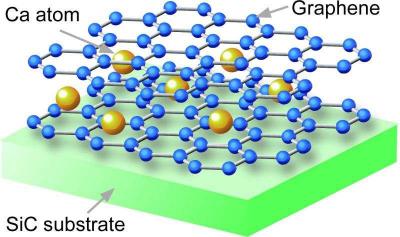A collaborative team from Tohoku University and the University of Tokyo has designed a way to make graphene superconductive, which means electrons can flow through it with zero resistance. This can lead to significantly more efficient electronic devices, power lines, high-speed electronic devices and more.

While exciting, it is important to say that this demonstration of superconductivity in graphene occurred at a temperature of -269 degrees Celsius, and room temperature superconductivity is still far from attainable. However, this research does suggest that graphene could be used to build nano-sized, high-speed electronic devices.
The team also found that neither genuine bilayer graphene nor lithium-intercalated bilayer graphene shows superconductivity, indicating that the superconductivity stems from the electron transfer of Ca atoms to graphene sheets.
Electrons in graphene are special in that they tend to take an electronic state called Dirac-cone, where they behave as if they have no mass and flow at very high speed, giving graphene a very high level of electrical conductivity. It is currently not clear what phenomenon takes place when the Dirac electrons with no mass become superconductive with no resistance, and further experimental and theoretical investigations are required to help answer the question.
The success in fabricating superconducting graphene is expected to have a significant impact on both the basic and applied researches of graphene. The superconducting transition temperature observed in this study is still low (4 K / -269 C), which prompts further studies into ways to increase it. From the application standpoint, the results could pave the way for the further development of ultrahigh-speed superconducting nano devices such as a quantum computing device, which utilizes superconducting graphene in its integrated circuit.

